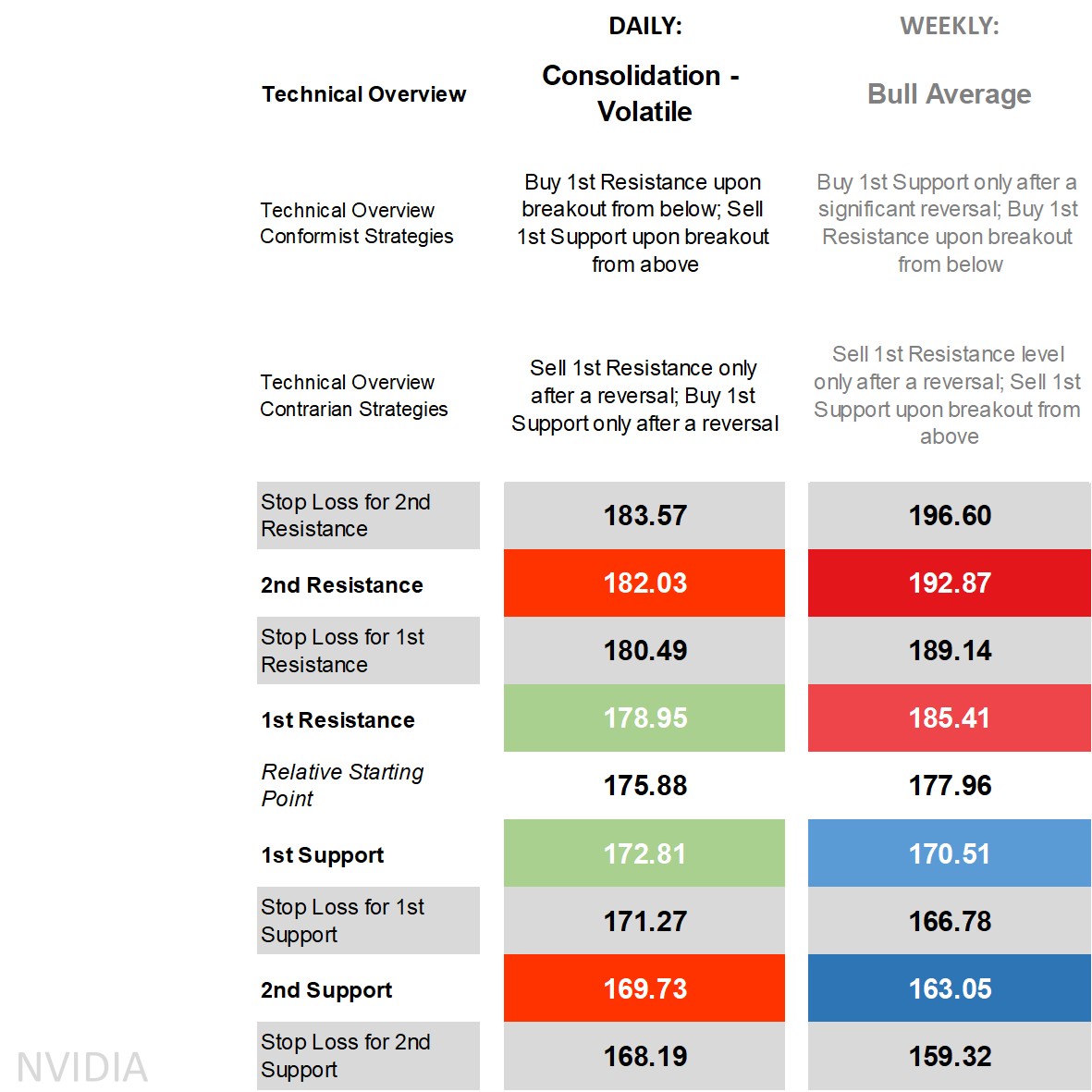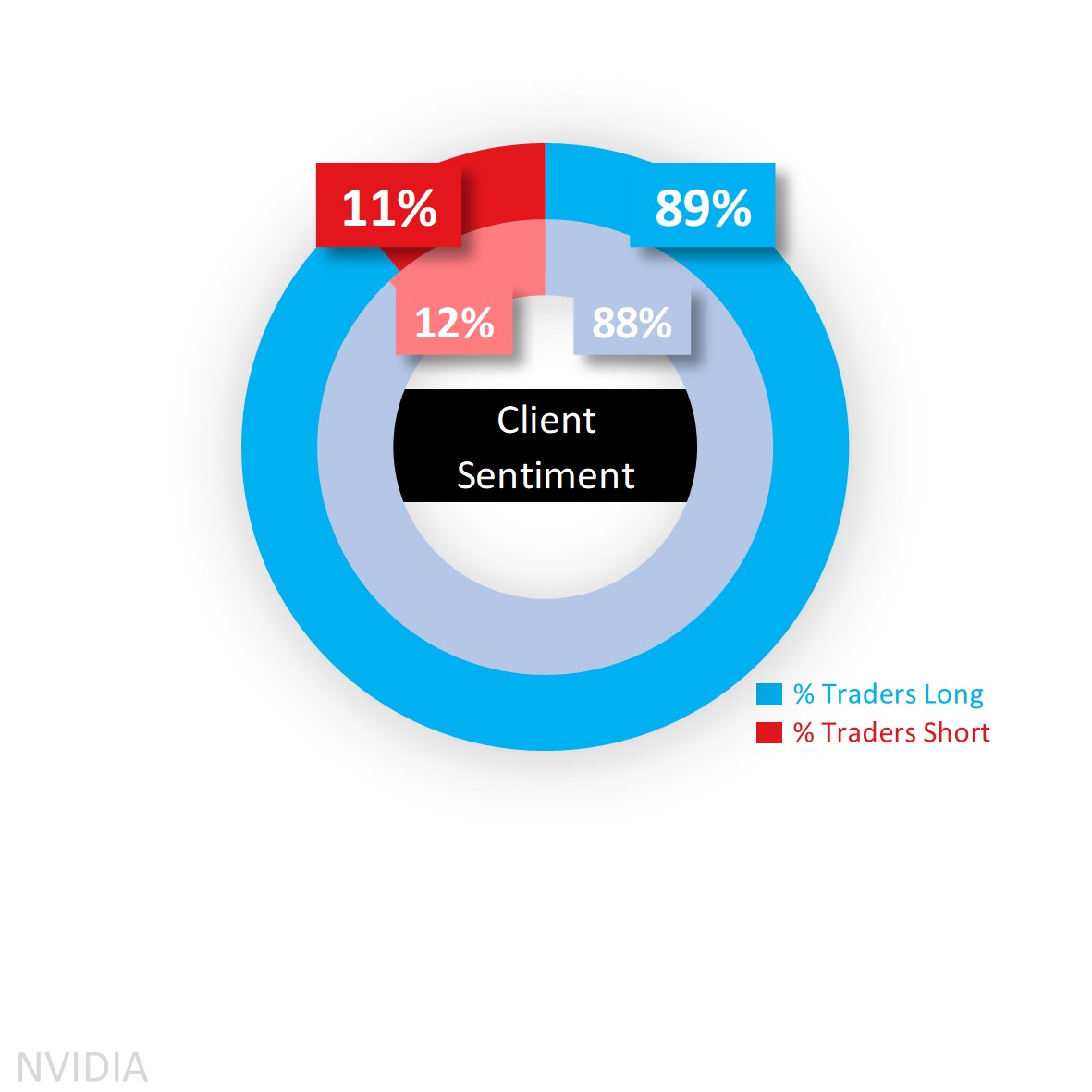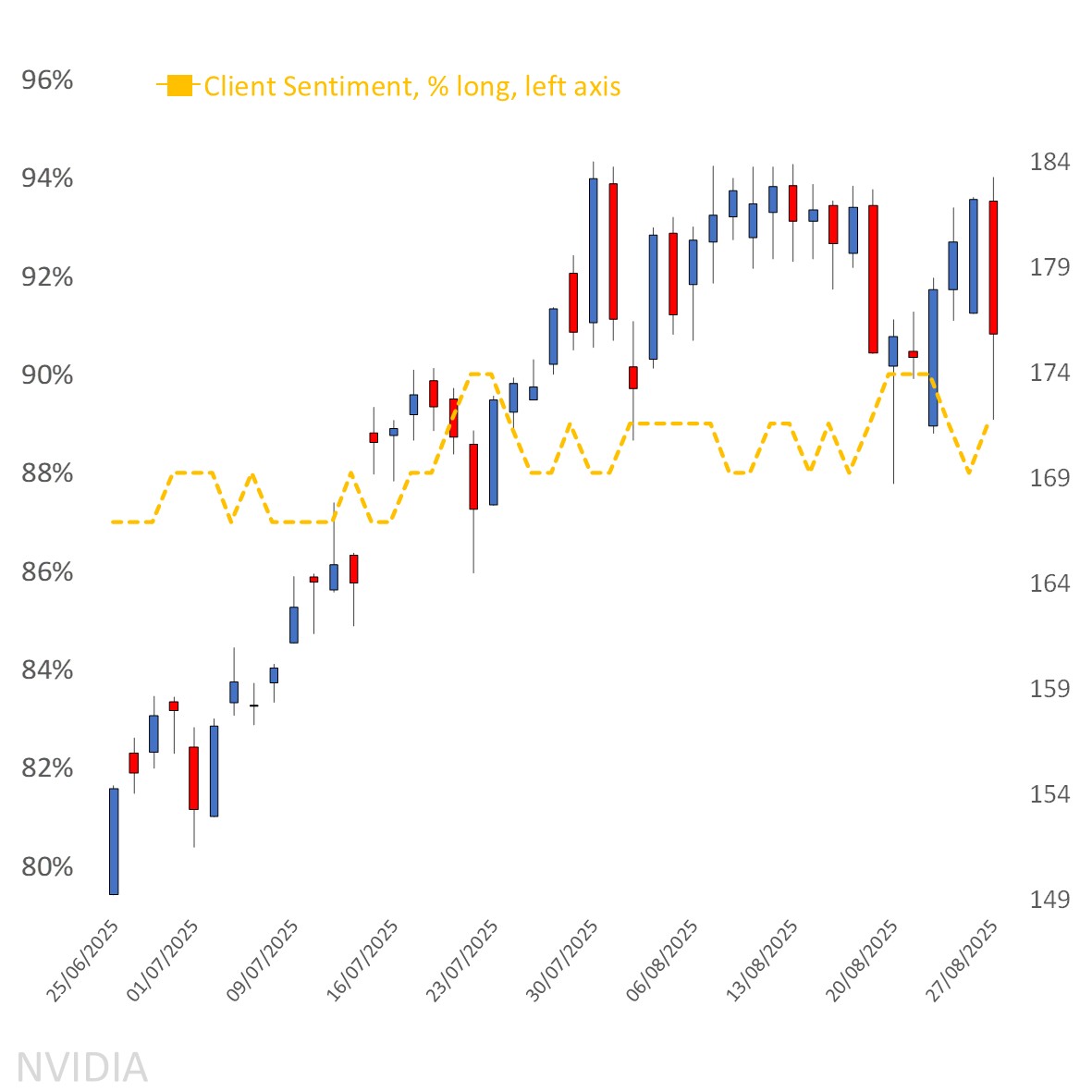Trading Nvidia After its Earnings
Shares fall over 3% in extended trading following the event, yet to derail most of its key technical indicators and where client sentiment is still very much in extreme buy territory.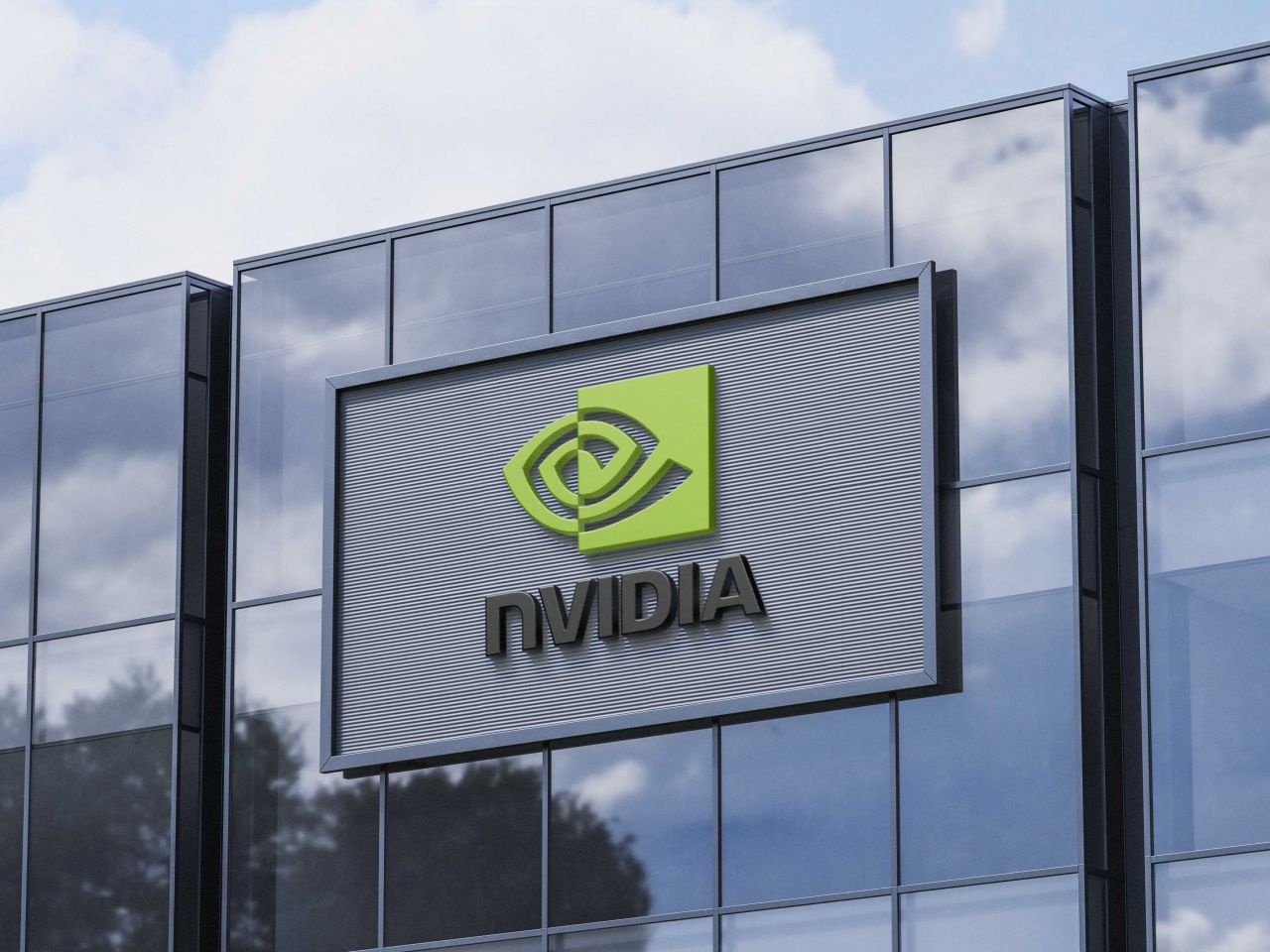
Nvidia’s Earnings Results
The bar was already set very high when it came to the stock market’s weightiest company, compromising over 7% of the S&P 500 and boasting a market cap of well over $4tn. When it came to Nvidia’s quarterly figures, it beat on both earnings ($1.05 vs $1.01 expected) and revenue ($46.74bn vs $46.06bn), with the latter up notably year-on-year. In terms of guidance, they see revenue in this quarter at $54bn +/- 2% (vs $53.1bn) though doesn’t assume H20 sales to China, and means only if it fell to the lower end of the range does it risk disappointing. That wasn’t all, as the board approved an additional $60bn in share buybacks, in all seemingly translating into a series of good news for the ‘AI engine’. And yet, in extended trading, shares dropped over 3%, as picky investors nitpicked over data center business revenue which at $41.1bn was slightly below forecast.
The results did send the Nasdaq 100 index lower in the futures market given Nvidia has an even larger weighting there of over 14%, but the tech-heavy index has managed to nearly fully recover as of writing and so too the S&P 500 which enjoyed a record close yesterday.
When it comes to US economic data, there wasn’t much to digest on Wednesday with the weekly mortgage applications down only 0.5%. But we’ll get plenty of data today with preliminary Q2 GDP (Gross Domestic Product) expected to show solid 3%+ growth, the weekly claims where it has been averaging higher for both initial and to some extent for continuing as well, with pricing data on offer tomorrow via PCE (Personal Consumption Expenditures) price index.
Nvidia’s technical overview, strategies and levels
It’s difficult to track technicals following a significant fundamental event that has the capacity to throw a wrench into key technical indicators, but looking at the daily time frame and price is above all its main long-term moving averages (MA) but beneath its main short-term ones, briefly breaking beneath the lower end of the Bollinger Band, on the DMI (Directional Movement Index) front the -DI extending its lead over the +DI that by one calculation classifies it as negative, an RSI (Relative Strength Index) in the middle, and an ADX (Average Directional Movement Index) still in trending territory but slowly working its way out of it. That makes for a conflicting overview, and prior to the event it was ‘consolidation – volatile’ where breakouts were in the conformist camp and reversal strategies for contrarians. And although the uptick in volatility wasn’t as high as what we’re used to expecting when it comes to its earnings event, it was still large enough. But now that it's out of the way it’ll need to continue providing that volatility if not intraday then at least intraday to give conformist breakout strategies the edge.
As for the weekly time frame, the figures and overview are as of the start of this week with the earnings event failing to cause price to reach its wider weekly 1st levels (in comparison to the daily time frame where naturally the intraday levels are narrower), with the technical overview still ‘bull average’ and in turn buy strategies remaining in the conformist camp even if with added caution off the weekly support levels with sell strategies reserved for contrarians.
Capital.com’s client sentiment for Nvidia and short interest on the exchange
It’s been a consistent story of extreme long bias among Capital.com’s clients for months, and the latest is no exception moving from 88% buy sentiment yesterday to 89% as of this morning, with the remaining 11% holding short positions. Short interest on the exchange is a fraction in comparison (source: Nasdaq.com), at 205,241,302 as of August 15 from a total 24.4bn shares coming out to less than 1%.
Client sentiment mapped on the daily chart
Source: Capital.com
Period: JUNE 2025 – AUGUST 2025
Past performance is not an indicator of future results.
Nvidia’s chart on Capital.com platform with key technical indicators
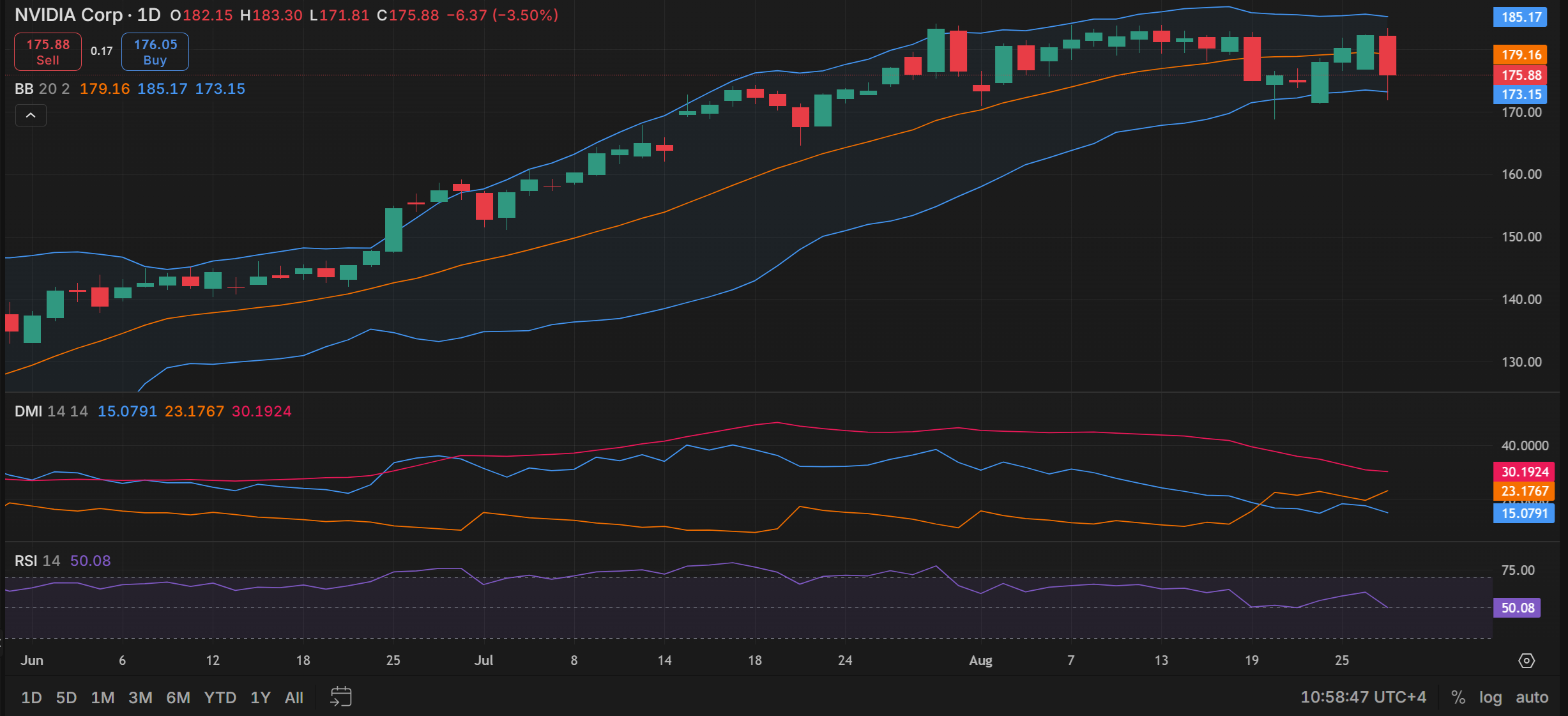
Source: Capital.com
Period: JUNE 2025 – AUGUST 2025
Past performance is not an indicator of future results.
